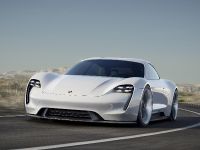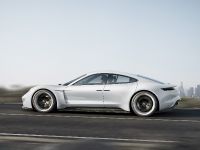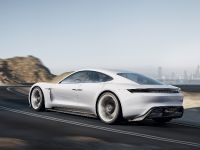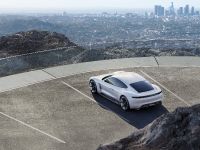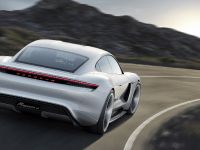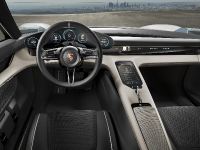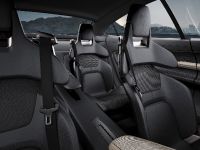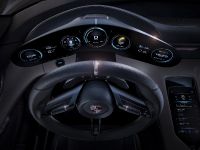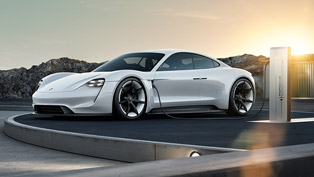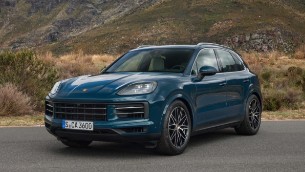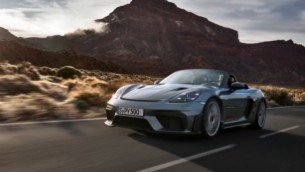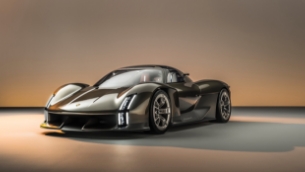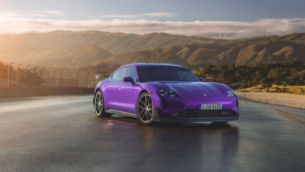Is Porsche Mission E the Next Tesla Model S?
 Porsche Mission E Sports Car Concept is the first battery-powered four-seat concept car from Porsche, which is having its world premiere at the Frankfurt Motor Show. Having almost unlimited power (of 600 hp) and impressive driving range of 500 km, the Mission E concept is probably Tesla Model S' biggest rival. Or at least this is what everyone is talking about. We must admit that if this EV enters production and is offered at a pricing similar to this of Model S, then probably Tesla would lose most of its potential clients. After all, this concept features the emblematic Porsche design… not to mention the 600 hp or the 15 minutes charging time. But let's see the details.
Porsche Mission E Sports Car Concept is the first battery-powered four-seat concept car from Porsche, which is having its world premiere at the Frankfurt Motor Show. Having almost unlimited power (of 600 hp) and impressive driving range of 500 km, the Mission E concept is probably Tesla Model S' biggest rival. Or at least this is what everyone is talking about. We must admit that if this EV enters production and is offered at a pricing similar to this of Model S, then probably Tesla would lose most of its potential clients. After all, this concept features the emblematic Porsche design… not to mention the 600 hp or the 15 minutes charging time. But let's see the details.
Mission E Stands for 600hp, 500km, and 15min
This is a big time in Porsche's history, because the Mission E is the ever all-electric vehicle that it has ever suggested to the automotive scene. Combines the unmistakable design of a Porsche with the exceptional performance, it offers the practicality of the first 800-volt drive system. By the way, the 600hp were achieved with the help of technologies from endurance racing. Two permanently-excited synchronous motors (PSM) like those in the 919 hybrid, accelerate the sports car and recover braking energy.
SEE ALSO: Mercedes-Benz Concept IAA: Too Much Future in the Present
They both produce the enormous horsepower and they can actually accelerate the Mission E to a speed of 100 km/h in less than 3.5 seconds. The 200 km/h is reached under 12 seconds. Another benefit of these motors is that they can develop their full power even after multiple accelerations at short intervals. Furthermore, the concept sports car features all-wheel drive system with Porsche Torque Vectoring. The latter automatically distributes torque to the individual wheels.
The driving range... Well, the driving range is more than impressive. Porsche says that the Mission E can cover up to 500 km on a single charge which takes up only 15 minutes.
Superior Driving Dynamics
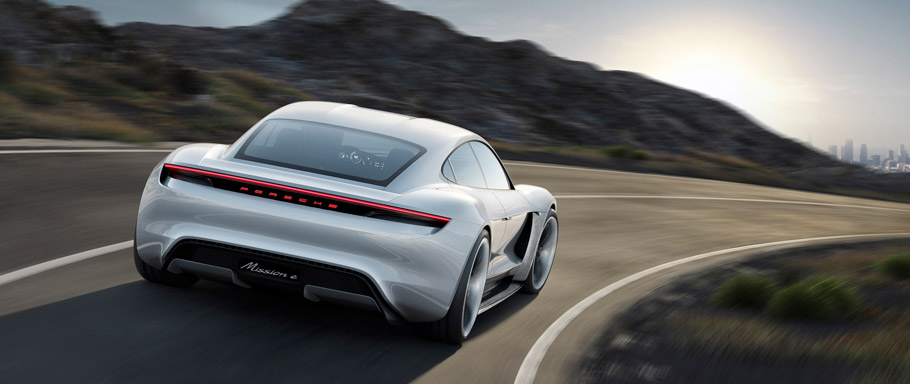
But there are more benefits that the horses, driving range and charging time. Porsche needed to make the best out of this concept, so they decided to count on a lightweight construction with optimal weight distribution and a low centre of gravity.
For this purpose, the lithium-ion battery is mounted in the car's underbody, and runs the whole length between the front and rear axles. This makes car's centre of gravity extremely low, thus boosting the performance and driving pleasure. I haven't mention that the body of this Porsche is a functional mix of aluminium, steel and carbon fibre reinforced polymer, while its wheels are absolutely carbon and measure 21-inch at the front and 22-inch at the rear.
Exterior Design with Porsche's DNA
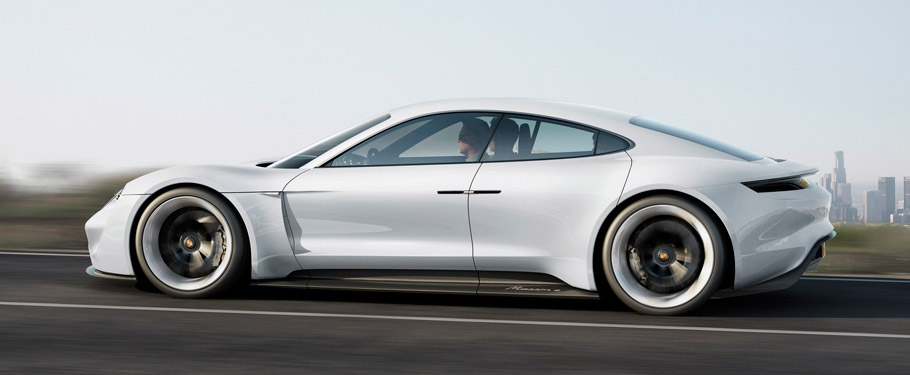
Mission E is instantly recognizable as Porsche. The height of just 130cm, integrated aerodynamics and distinctive air inlets and outlets on the front, sides and at the rear, are characteristic about this concept. We also spot a new type of matrix LED headlights in the brand's typical four-point light design.
On the other hand, the distinctive front wings and an extremely low-cut bonnet reference 911 design. The design of the rear emphasizes the typical sports car architecture. The cool three-dimensional "PORSCHE" badge illuminates from thee inside and hovers beneath an arch of light that extends across the entire width in a black glass element.
Interior with Four Single Seats
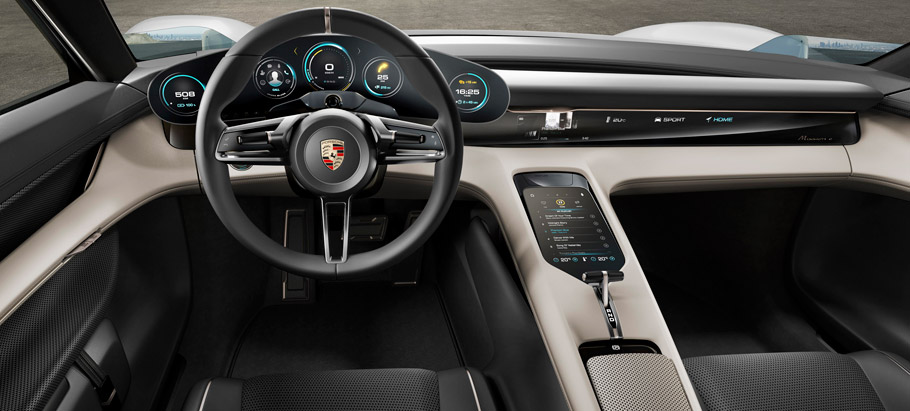
The cabin of Mission E is pure, open and practical. It offers room for four via the exclusive race bucket seats. They are with lightweight design and give occupants secure lateral support during dynamic driving. Between the front seats there is a centre console, which looks like a bridge with open space beneath and reaches the dashboard.
The instrument cluster has five round instruments. They are all virtually displayed in OLED technology, i.e. by organic light-emitting diodes. The round instruments are organized according to the driver-relevant themes of Connected Car, Performance, Drive, Energy and Sport Chrono.
Furthermore, the entire dashboard is divided into two three-dimensionally structuring layers: the upper layer integrates the driver's display. Between the levels there is a holographic display that extends far into the passenger's side and shows individually selectable apps.
There are even virtual exterior mirrors! They are pretty impressive: the lower corners of the windscreen show the images of the outside cameras which are positioned in the front wings. In this way the driver can get a better view of the surroundings and have safety information on display if he or she wishes so.
To sum up, Porsche Mission E seems like a very good rival of Tesla Model S. But it is matter of time to understand, whether this car will ever enter production. Until then the team at Tesla can sleep uninterrupted. Any thoughts?
Source: Porsche
